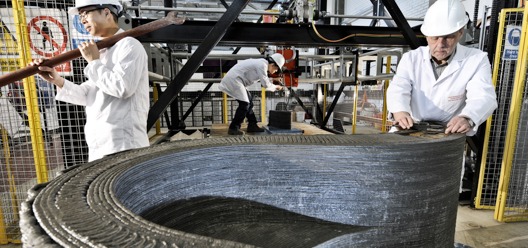With several larger 3D printing experiments taking place, it’s now becoming clear there are two distinct styles of 3D printing: Fabrication and Construction.
All 3D print processes work by repetitive deposition of layers to form solid objects, implying that more detail can be achieved by using smaller layer sizes: more layers, more detail.
But here’s the big catch: more layers takes more time to execute, sometimes dramatically more time. A sixteen+ hour print job is a lot longer than a four hour job, but it would provide 4X the detail, theoretically.
Most of the 3D printers made commercially today are focused on building items smaller than 1 x 1 x 1m in size, and usually much smaller, say, 200 x 200 x 200mm. In this scenario, you often want increased detail to produce finer finished parts. By doing so, you do increase the print time, but not outrageously so.
Now consider the experiments in 3D printing very large structures, like buildings or sculptures. These objects are many, many times larger than those printed in typical 3D printers. A sixteen hour print, enlarged to building size, might take sixteen DAYS to 3D print!
At the same layer size.
So here’s the tradeoff: larger objects require less detail than fine, handheld objects. Larger objects are typically not inspected closely; they are merely observed from a distance. Smaller objects are held in hands with highly sensitive fingertips and examined by eyes at less than a meter in distance.
There is far less need for detail when 3D printing larger structures. This means this style of 3D printing would use much larger layer sizes than you would find in a desktop 3D printer. Larger layer sizes means you can print much faster.
Let’s look at an example: the sixteen hour job printed with 0.075mm layers might be an object 200mm tall requiring 2667 layers. If the same object were printed in 2mm layers at the same speed, you’d get a 5.3m object in sixteen hours. Now, there’s obviously going to be differences in print speeds, materials, etc, but you get the idea.
This “large and coarse” style of printing might be called, “3D Construction Printing”, while the more standard desktop 3D printing style might be called “3D Fabrication Printing”.
We haven’t had to distinguish between these two forms yet as there hasn’t been much activity on the Construction side. But recently there’s been increased interest suggesting it might be time to talk about these styles more explicitly.
Image Credit: Freeform Construction


